2024 – CHW
The bananas in the Burncoose Nurseries car park have grown exponentially.
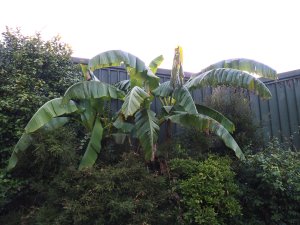
The elderly Magnolia soulangeana on the Burncoose drive has many, dark purple, secondary flowers.
Last few flowers on Weigela coraeensis at the entrance to Burncoose gardens – these age from white to pink and then red.
Cotoneaster bullatus covered in berries which are already ripe by the KPK offices.
Gigantic seed heads of white seeds on the pot grown Cordyline banksii.
Viburnum tinus ‘Lisarose’ in full flower. It normally performs in December – March.
A good lot of home grown climbing plants re-potted, trimmed and re-tied to new canes ready for sale next spring.
A good lot of home grown climbing plants re-potted, trimmed and re-tied to new canes ready for sale next spring.
2023 – CHW
Thuja koraiensis dead in the Isla Rose. Too hot and dry. The 3 in the Rookery are fine despite the roe deer liking them.
Thuja koraiensis dead in the Isla Rose. Too hot and dry. The 3 in the Rookery are fine despite the roe deer liking them.
A secondary flower or two on Rhododendron yakushimanum.
The original pre-1910 clump of white arboreum has finally died in the drought. Asia has seedlings but the plant still has much seed to give from its final terminal flowering. Thankfully self-sown seedlings are doing well beside it.
One Camellia reticulata ‘Captain Rawes’ ringbarked by a strimmer but still alive. Its neighbour is not. Strimmer not drought! Keep the wire netting surrounds for longer even if clearing them out once a year produces more work.
Drought struck rhododendrons tyring to reshoot half way down the stems.
Eupatorium ligustrinum nearly over on Bond Street.
Another suddenly dead oak tree between the Ferneries. I fear that we do need to fell this one.
2022 – CHW
My gardening friend, Peter Shotter, sends me this wonderful picture of a (pale) Lapageria rosea in flower growing up through his Magnolia doltsopa! Quite a sight! He wants to propagate Lapageria rosea ‘Picotee’ and we are doing so.
My gardening friend, Peter Shotter, sends me this wonderful picture of a (pale) Lapageria rosea in flower growing up through his Magnolia doltsopa! Quite a sight! He wants to propagate Lapageria rosea ‘Picotee’ and we are doing so.
I will do a video soon on how to propagate Lapageria from layers or layered tendrils from small plants in Asia’s propagation unit. It is a slow process, taking a couple of years, with very small numbers of results but Peter is top of the list for ‘Picotee’ if we can produce one of a decent size. A loss leader of course but important to propagate something as rare and beautiful as this. We looked at pictures of ‘Picotee’ a few days ago but here it is again.
Concrete laying nearing completion at White Styles.
2021 – CHW
Calliandra surinamensis was planted out three years ago for want of something to do with it when it was too big to remain in the greenhouse. As its name implies, it is clearly a conservatory plant. Nevertheless here it is in rude health on a sunny but sheltered bank.
Calliandra surinamensis was planted out three years ago for want of something to do with it when it was too big to remain in the greenhouse. As its name implies, it is clearly a conservatory plant. Nevertheless here it is in rude health on a sunny but sheltered bank.
Indigofera howellii ‘Reginald Cory’ is perhaps the best thing in flower today in the garden.
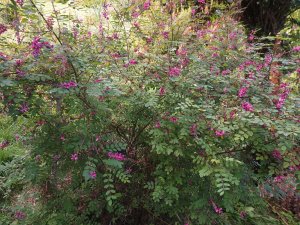
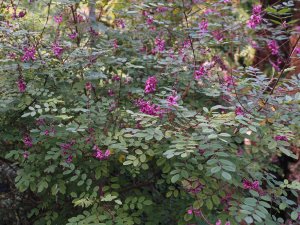
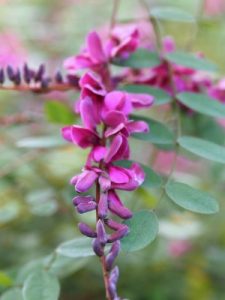
A seedling tree paeony has appeared under a Rosa roxburgii. Unusual!
Pheasants eating the ripe juicy blue-black berries on Cornus controversa.
A rather better flower now on Hedychium spicatum ‘Liberty’ (BWJ 8116). Last week’s picture did not do it justice. A very intricate flower.
2020 – CHW
The newly planted Lyonia ligustrina appears to have flowered without anyone noticing it. We have one other Lyonia species in Higher Quarry Nursery but it has not flowered since being hit by a tree and cut back (Lyonia ovalifolia – Forrest introduction).
The newly planted Lyonia ligustrina appears to have flowered without anyone noticing it. We have one other Lyonia species in Higher Quarry Nursery but it has not flowered since being hit by a tree and cut back (Lyonia ovalifolia – Forrest introduction).
The bladders on Staphylea pinnata have turned pink.
And more yellow on Staphylea colchica.
Rhododendron ‘Norfolk Candy’ is a regular second flowerer.
Ross has cleared the two fallen oak trees below The Vean.
The conversion of The Hovel is gathering pace. All the walls now underpinned and a very tidy site.
2019 – CHW
A trip to the greenhouse to see what is new here. I am overwhelmed by the quantities of new things which Asia has propagated and which are looking superb. Production of rarities from seeds and cuttings now at record levels.Holboellia latifolia var. chartacea has three huge pinkish purple seed pods each of which is nearly half the size of a banana. Two are splitting open to reveal rows of seeds in a pithy white covering. I think this performed similarly last year but it may have been another species of Holboellia. Anyway Asia now has plenty of plants coming on, in time, for the Burncoose website.
A trip to the greenhouse to see what is new here. I am overwhelmed by the quantities of new things which Asia has propagated and which are looking superb. Production of rarities from seeds and cuttings now at record levels.Holboellia latifolia var. chartacea has three huge pinkish purple seed pods each of which is nearly half the size of a banana. Two are splitting open to reveal rows of seeds in a pithy white covering. I think this performed similarly last year but it may have been another species of Holboellia. Anyway Asia now has plenty of plants coming on, in time, for the Burncoose website.
The seed heads on Tetradium ruticarpum are still not ripe but they have now turned red.
Flowers again on Salvia dombeyi. Extraordinarily pretty and huge (6-8’’ long)!
At last we see the first tiny flower buds ever seen by us on Berberidopsis beckleri. Asia has propagated enough of these now to put it into the 2020 Burncoose catalogue. It may be another month or so before these flowers are fully formed and out on the long, more recent, new growth shoots. These buds suggest the flowers may be similar to Berberidopsis corallina but what will the colour be?
The last flowers on Buddleia limitanea which was given to us by Peter Moore. A mauve flower which fades markedly as it matures to a light mauve-pink. Good white indumentum under the leaves.
Strobilanthes rankanensis was a gift from Hergest Croft Gardens (Lawrence & Elizabeth Banks) and is clearly very rare. Clearly tender too so it must come back inside for the winter. Here are its first few flowers although there are hundreds more still in bud and it is going to be a fine display soon. Strobilanthes come from N. India and Madagascar but I guess this species is from the former. Not in my reference books anyway. Asia has found it easy from cuttings and already has a few small plants.
Vaccinum cylindraceum with its many green seed clusters now turning black and soon ready for Asia to collect. We saw this in full flower in the diary only three months ago. A quick change around.
2018 – CHW
Smoke from the huge bonfire in Dry Walls drifts down the valley and over the pond. We are clear felling an area to replant.
Smoke from the huge bonfire in Dry Walls drifts down the valley and over the pond. We are clear felling an area to replant.
Thinning 20 to 25 year old woodland has been completed in Brownberry Wood. What is left, despite the squirrel damage, has a chance of becoming a decent timber crop in 50 to 60 years’ time.
2017 – CHW
Completing the annual tree survey in Burncoose Garden.A big limb has cracked off an oak opposite the mist houses. A branch had been pruned out high up years ago and water had seeped into the next branch down. Not too much damage but it frightened the house visitors!
Completing the annual tree survey in Burncoose Garden.A big limb has cracked off an oak opposite the mist houses. A branch had been pruned out high up years ago and water had seeped into the next branch down. Not too much damage but it frightened the house visitors!
A few big seeds setting on Styrax obassia but not many.
The Cornus florida by the pond colours and curls its leaves for the autumn. Very attractive but no fruits on this 25 year old tree growing in poor soil.
Sorbus pseudobakonyensis fruits on a 10ft tall tree planted six to eight years ago. First time it has fruited outside the nursery I believe.
Cercidiphyllum japonicum ‘Strawberry’ showing superb autumn colours. It is very fine in new growth too which is where I had thought that the name originated. Not so sure now.
2016 – CHW
The great joy of gardening is to inspect recent new planting and see how well plants are doing.
The great joy of gardening is to inspect recent new planting and see how well plants are doing.
Tilia mexicana is a species of lime which I had forgotten we even had but look at the growth since planting in 2011. It is a tree already with huge leaves and trailing branches. It only came into the country in 1991 and was collected by Martin Rix. This looks set to be a popular tree even if the botanists one day try to reclassify it as Tilia caroliniana.
Ehretia thyrsiflora was grown from ?Korean arboretum seed and only planted out this spring. It looked vigorous but tender in pots and may yet be but amazing growth this season none the less and a bronze hue to it. Too rare to be in any reference book and we have three more to go out.
This looks like another Xanthoxylum species but the plan needs updating. Horrid prickles but amazingly intricate leaves.
Quercus laurifolia was also planted in 2011 and has done well although I do not really see it as ‘laurel like’ at all. Does not look much like an oak either come to think of it!
The tree which has grown far and away the fastest in this area (25) is a sorbus which I believe is Sorbus scalaris. This is its first and only cluster of fruits this year. Probably the first it has had time to bother with after growing so fast.
Photinia villosa var coreana is even more plastered with fruits than in last year’s pictures. The spreading branches are drooping down with the weight of them.
The first time I have ever seen fruits on Viburnum prunifolium and you can well see why it has this name! A very odd shrub and although, or perhaps because, it looks unhealthy it has a fair crop.
Tilia cordata ‘Winter Orange’ is turning in colour to yellow and its orange new shoots are going from red to orange as they will be soon.
Carpinus betulus ‘Fastigiata’ was planted in 2009 and is romping away erectly as it should. The wind is showing off the undersides of its leaves nicely in the sun.
Sadly this sorbus has no label on the plan. Any suggestions anyone?
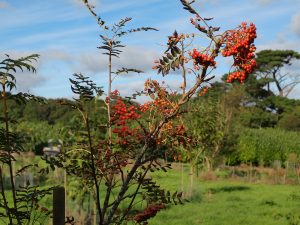
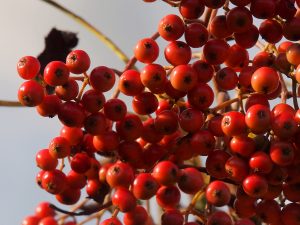
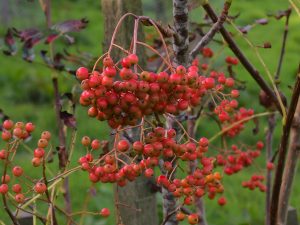
Sorbus gonggashanica was introduced in 1981 by Roy Lancaster. This was only planted in the spring but already a few white fruits flushed pink (or nearly / will be soon).
Carpinues japonica is a less well known hornbeam species but clearly hardy and vigorous. This was only planted in 2010. A spreading, flat top to the tree and large leaves.
This is Carpinus rankanensis with a more drooping habit which has grown more slowly since 2010.
The only really sick looking big plant in Areas 23, 26 and 25 is strangely Crataegus laevigata ‘Pauls Scarlet’. Leafless already and covered in white and yellow lichen (bad sign in a young plant) it has plenty of dieback but some this year’s new growth lower down. I fear the stake failed to hold it one winter and some roots got broken.




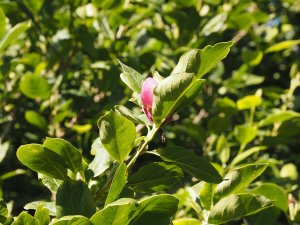
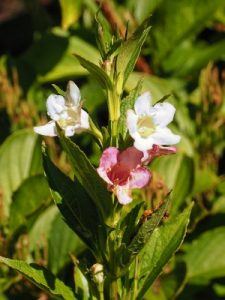
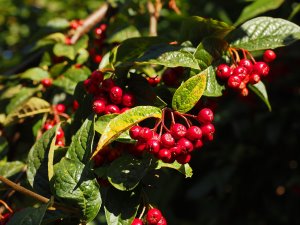
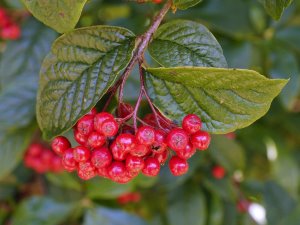
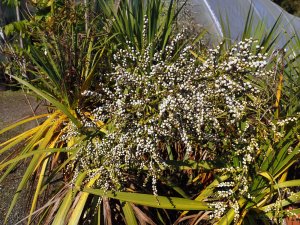
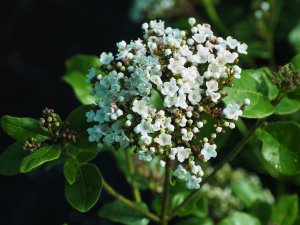
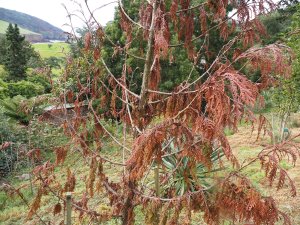
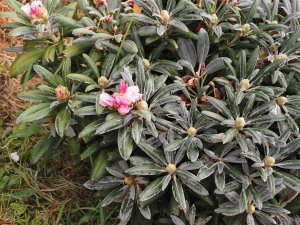
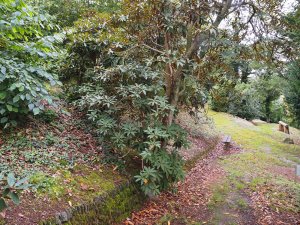
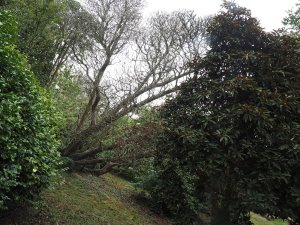
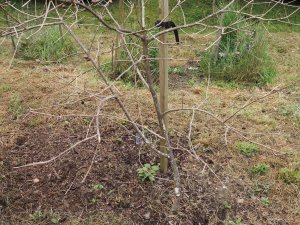
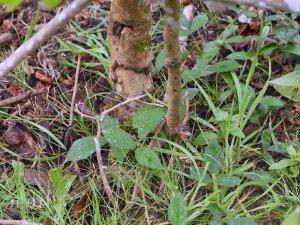
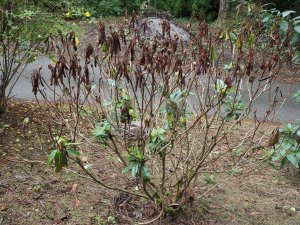
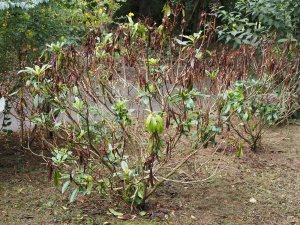
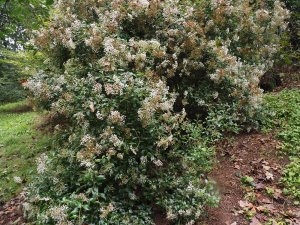
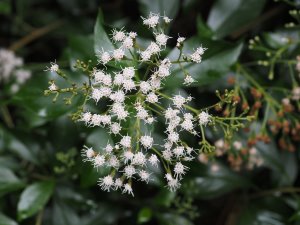
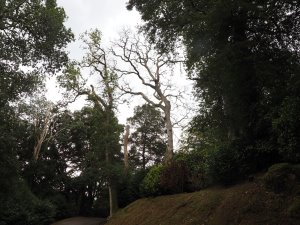
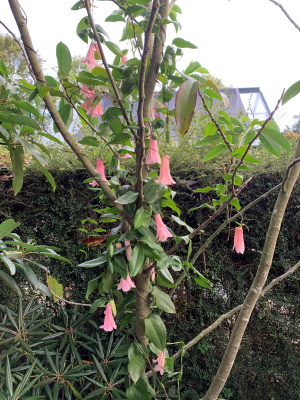
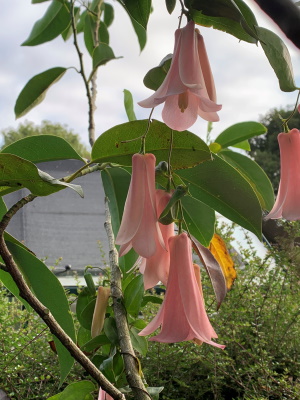
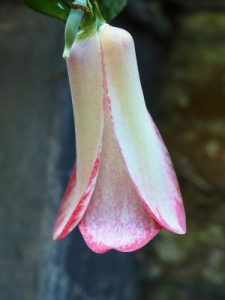
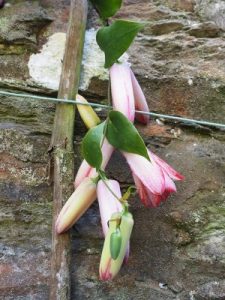
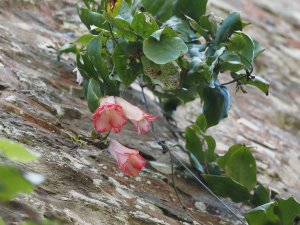


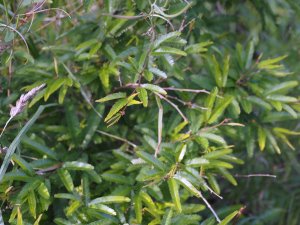
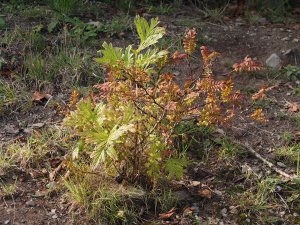
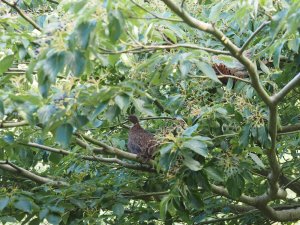
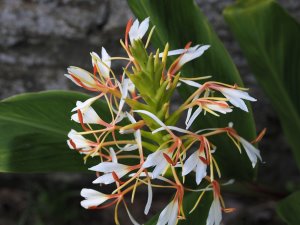
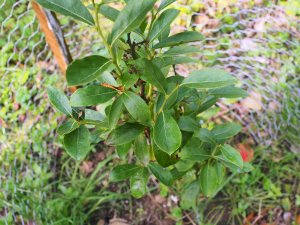
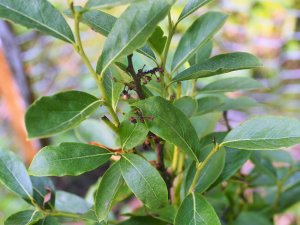
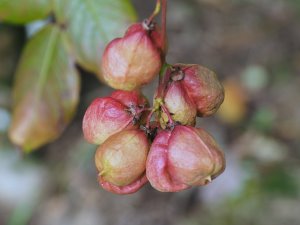
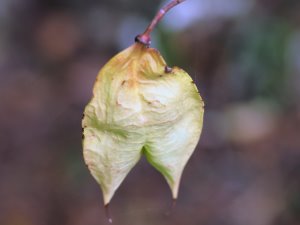
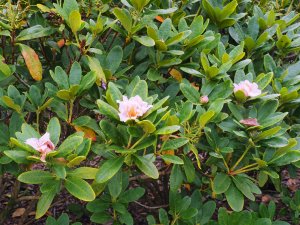
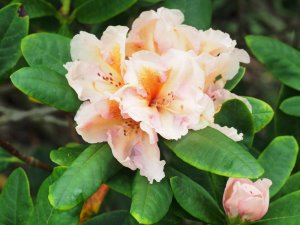
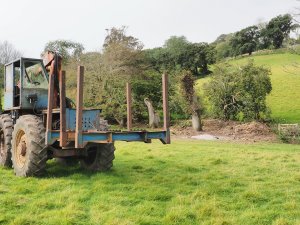
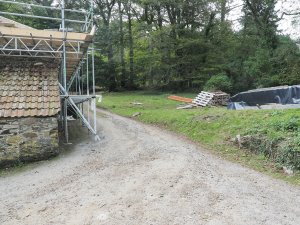
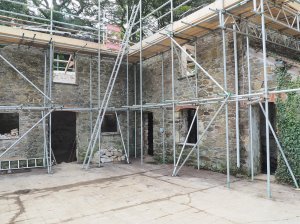
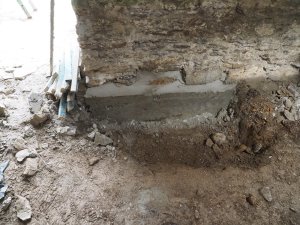
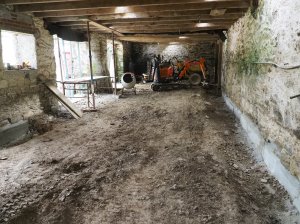
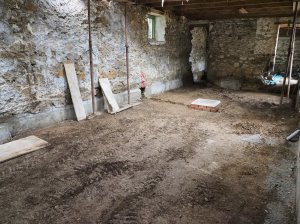
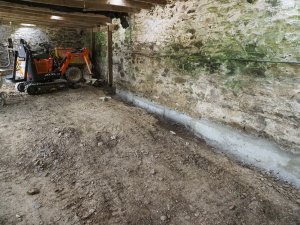
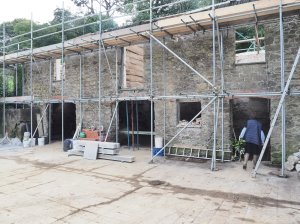

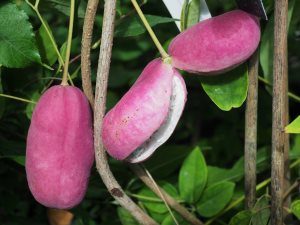
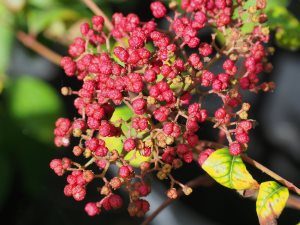
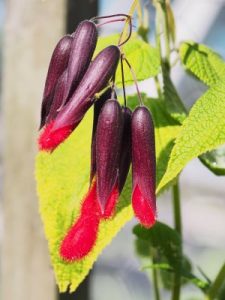
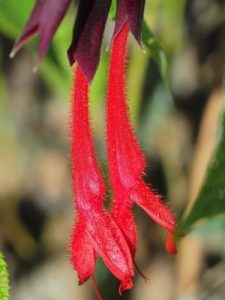
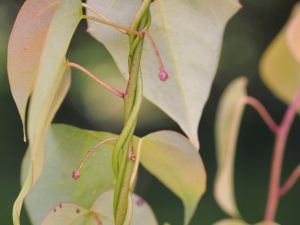
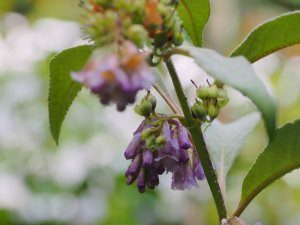
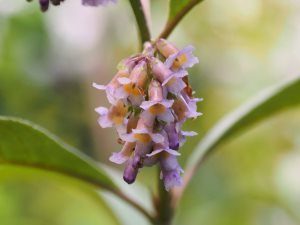
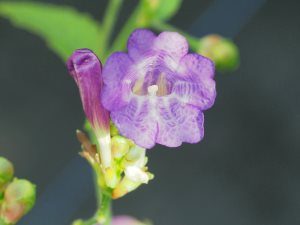
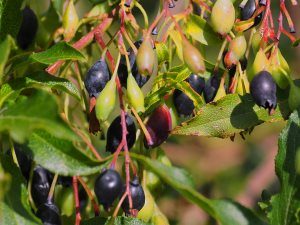
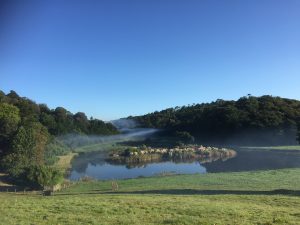
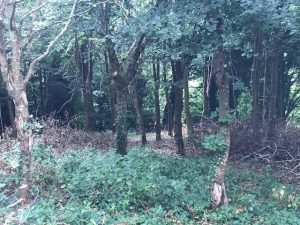
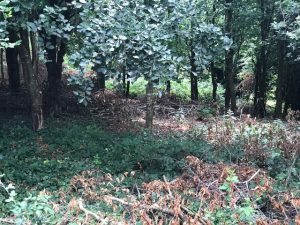
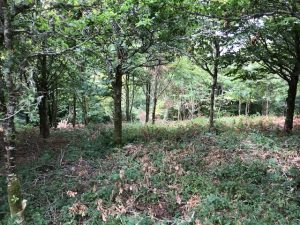
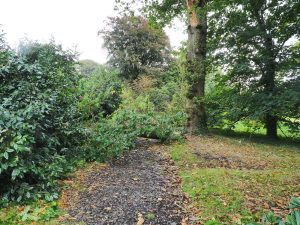
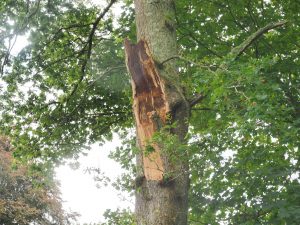
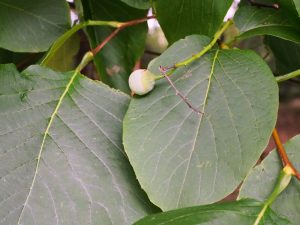
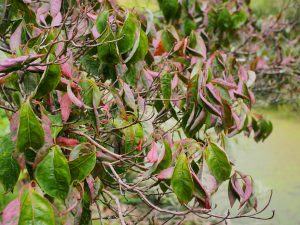
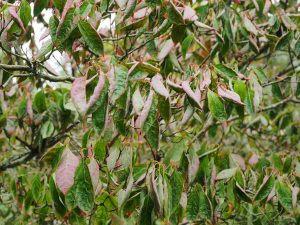
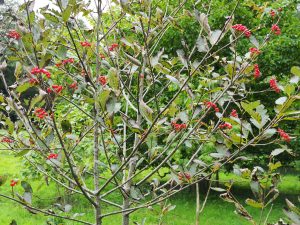
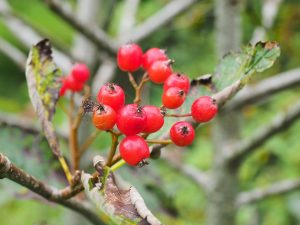
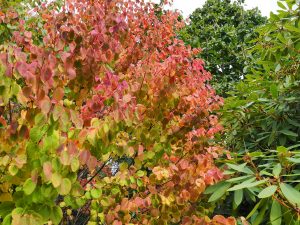
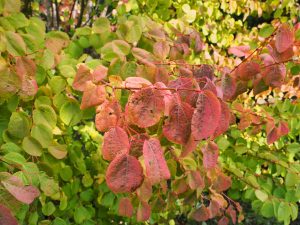
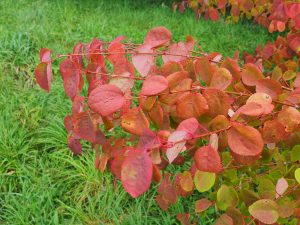
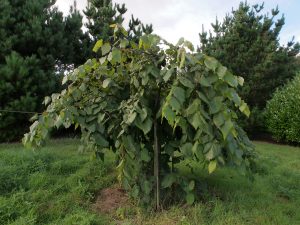
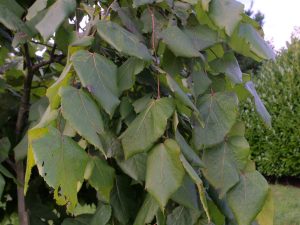
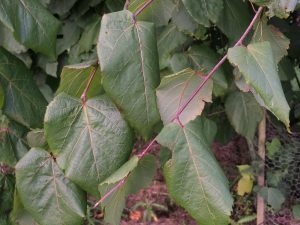
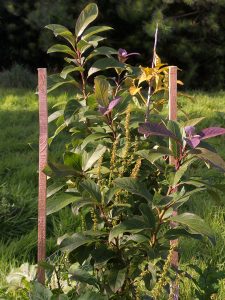
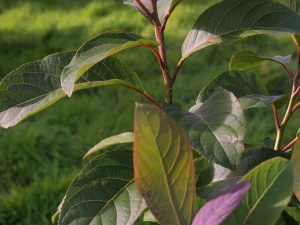
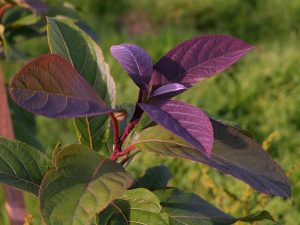
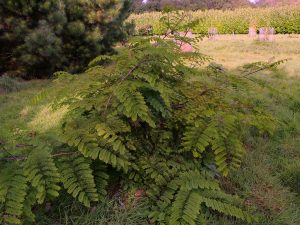
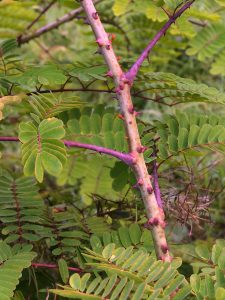
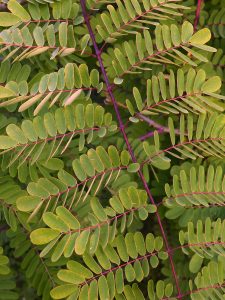
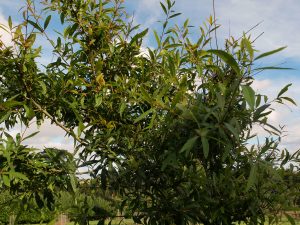
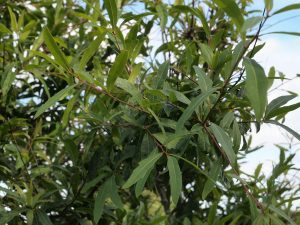
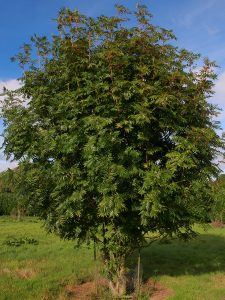
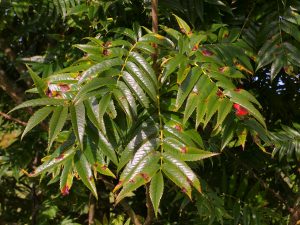
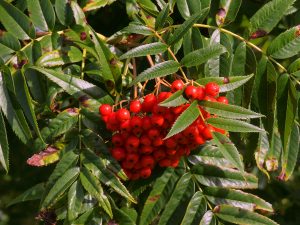
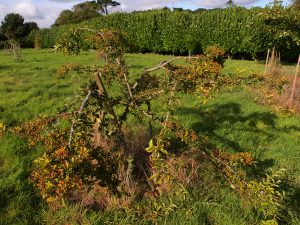
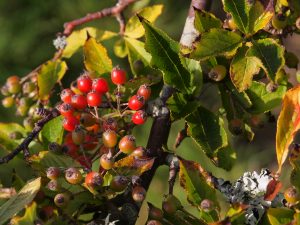
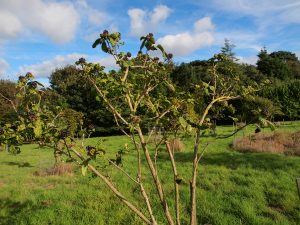
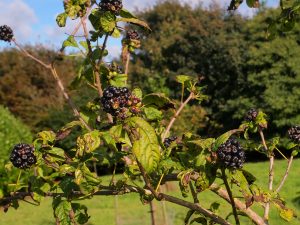
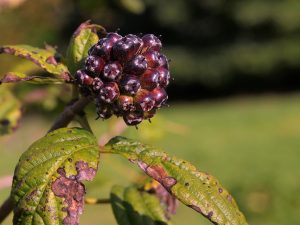
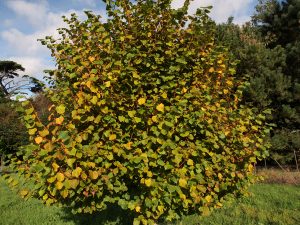
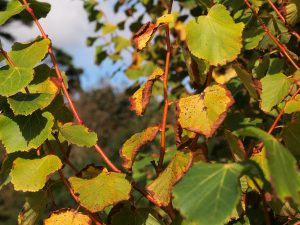
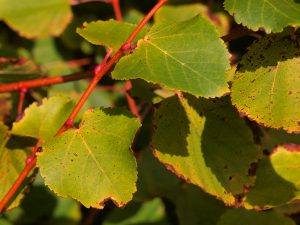
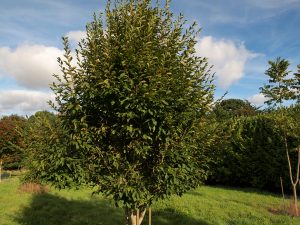
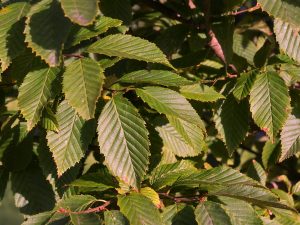
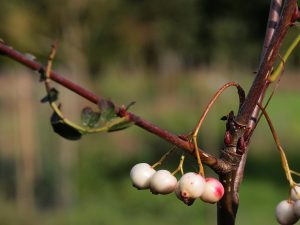
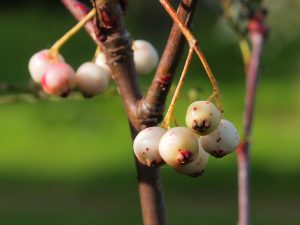
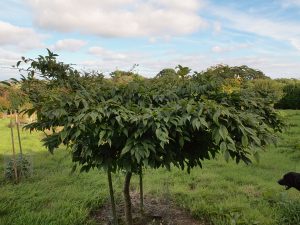
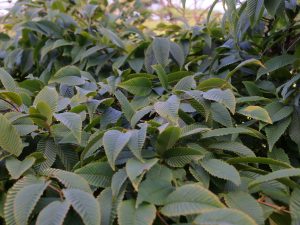
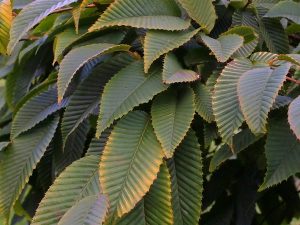
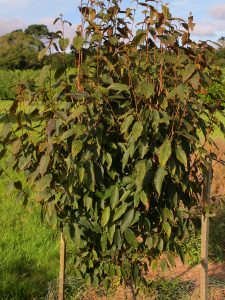
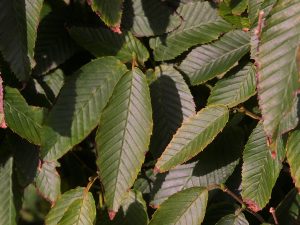
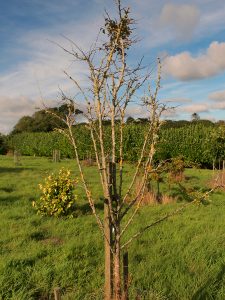
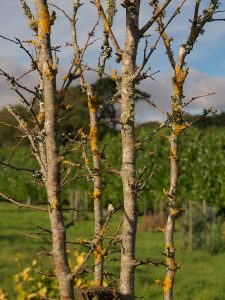
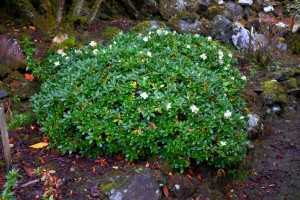
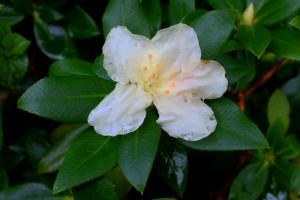
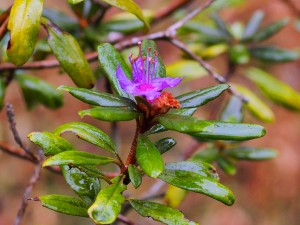
‘ 21 I wonder wether Calliandra still survives, this would be exceptional.
’16 I am quite sure that this supposed Zanthoxylum is Caesalpinia (now Biancaea) decapetala, the lovely flowering but very prickly Mysore-thorn.
Carpinus (betulus) looks good with you, here they become brownish in the heat from late August on and are therefore less recomendable. Only in shade they keep their green appearance. I guess Zelkova would be better, like Zelkova schneideriana, abelicea and serrata, which last has proven to do well here.
‘ 21 I wonder wether Calliandra still survived, this is exceptional.
’16 I am quite sure that this is Caesalpinia (now Biancaea) decapetala, the lovely flowering but very prickly Mysore-thorn.
Carpinus (betulus) looks good with you, here they become brownish in the heat from end of August on and are therefore less recomendable. Only in shade they keep their green appearance. I guess Zelkova would be better, like Zelkova schneideriana, abelicea and serrata, which last does well here.